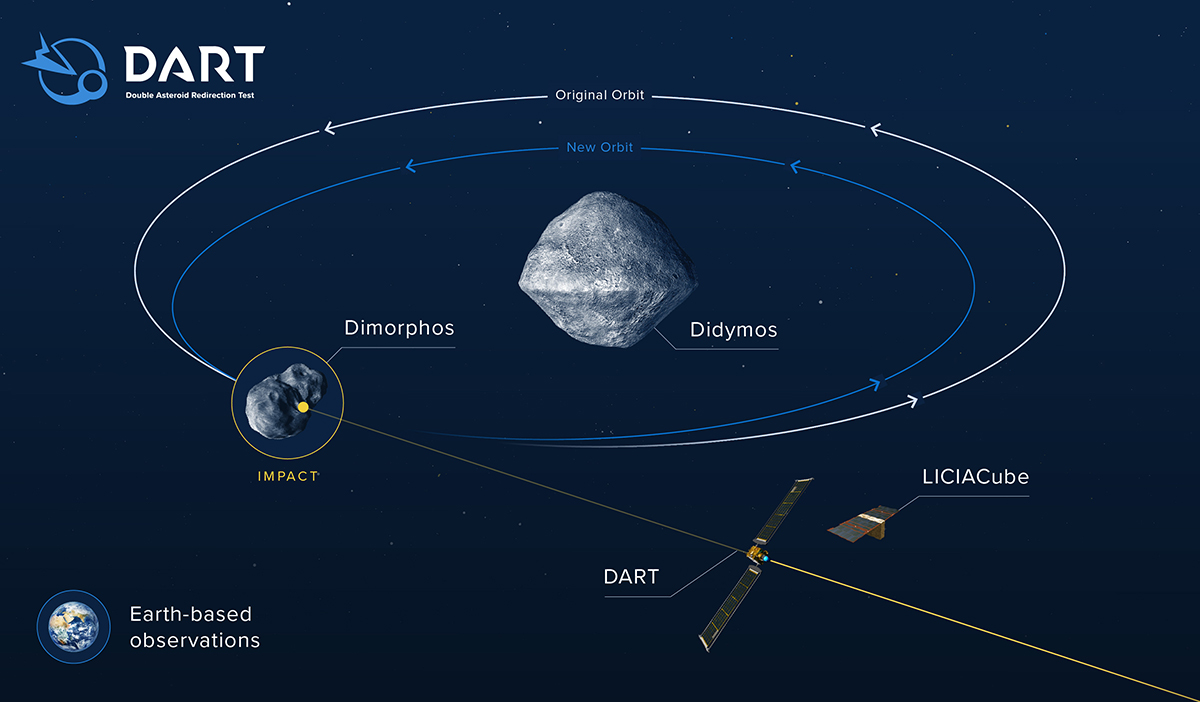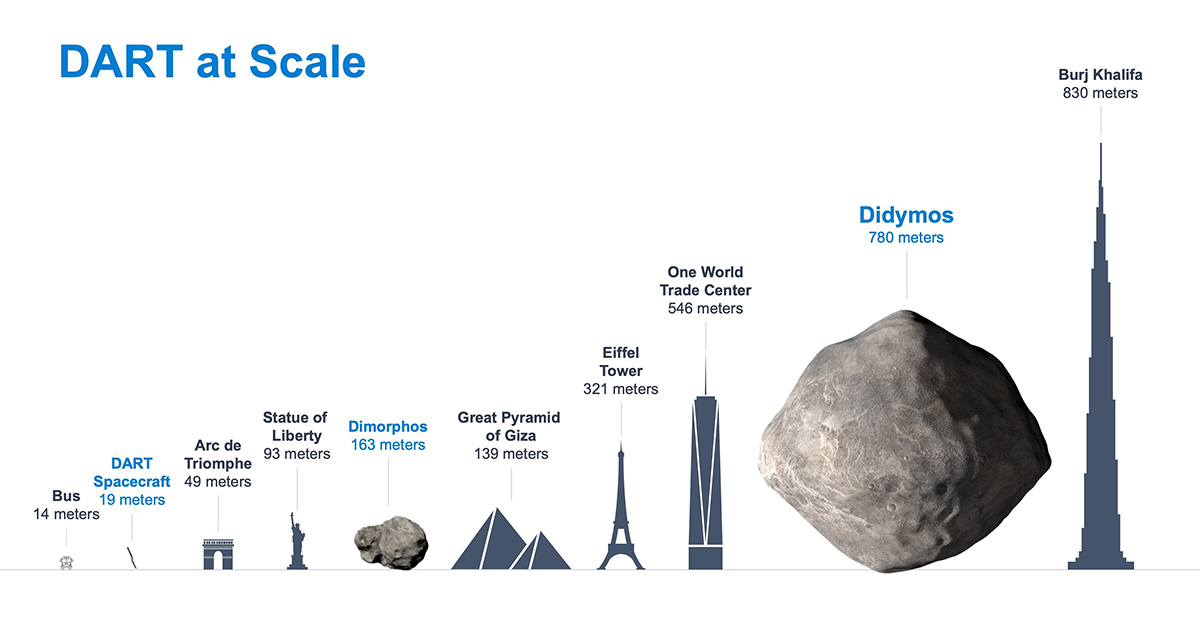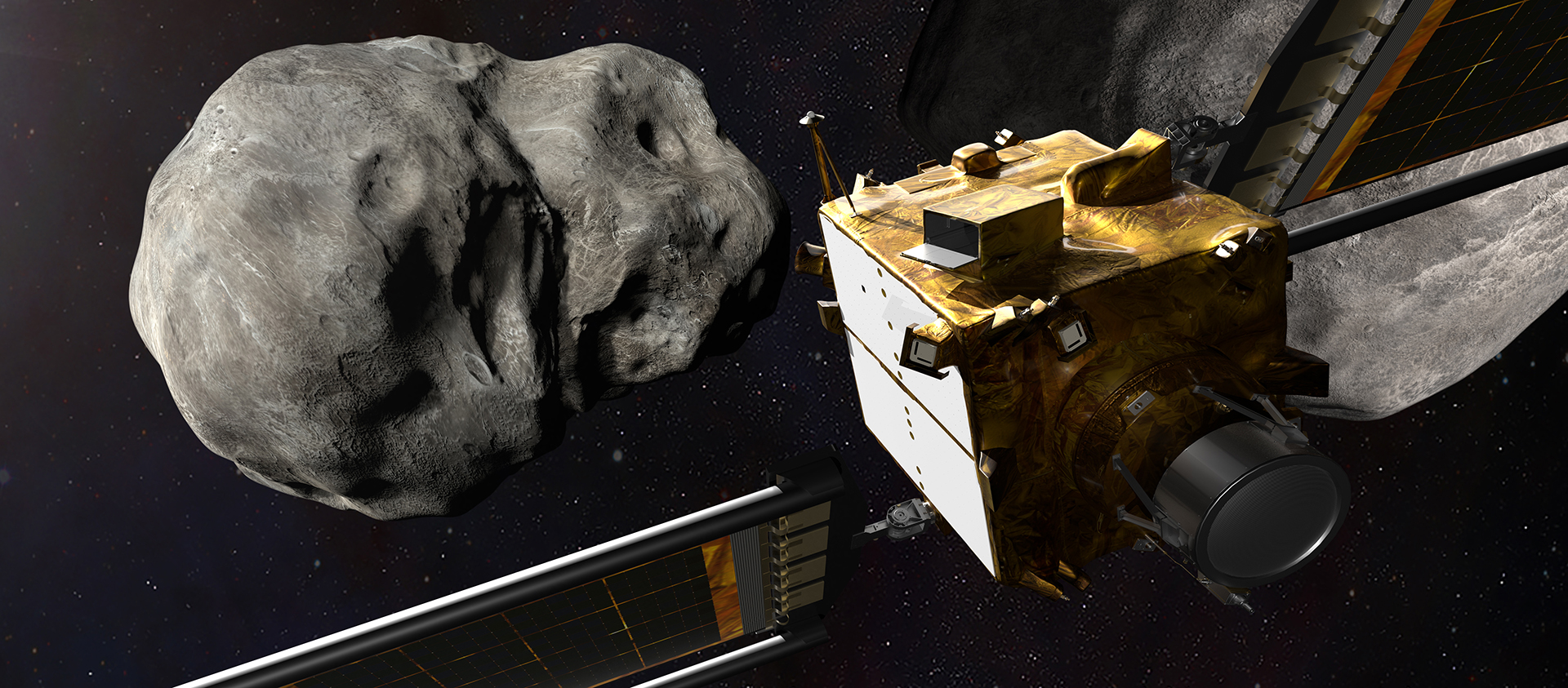Matter and the universe
Defending the Earth with Bern’s help
The NASA DART mission was launched in 2021: A space probe is to collide with an asteroid to deflect it from its orbit. Researchers from the University of Bern are also involved in this undertaking.
Asteroids can pose a threat to the Earth – after all it is likely that an impact by such a celestial body was responsible for the extinction of the dinosaurs 66 million years ago. In 2013, a 20-meter asteroid caused considerable damage upon its impact in Russia. Can an asteroid that might, one day in the future, be on a collision course with Earth be deflected from its trajectory to prevent it from hitting our planet?
On November 24, 2021, the DART space probe of the US space agency NASA was launched to see whether that in fact is actually possible: A space probe is to be allowed to collide with an asteroid to deflect it from its orbit.
Martin Jutzi, Sabina Raducan and Fabio Ferrari from the Space Research & Planetary Sciences Department of the Physics Institute of the University of Bern are also involved in this undertaking. “We are part of the DART-Impact Working Group and the DART-Dynamics Working Group. Using simulations we are trying to find out what will happen when the probe hits the asteroid. For example, how efficiently the asteroid can be deflected, how large the crater will be and what happens to the displaced material,” explains astrophysicist Martin Jutzi.
Jutzi and his colleagues have already caused a number of sensations to date with models and simulations of the formation and development of celestial bodies. “Naturally, it is a great success that we are involved in the DART mission,” says an enthusiastic Sabina Raducan.
Did you know?
“The DART mission is the first attempt in space travel to change the orbit of a celestial body. DART is a joint project of NASA and the Applied Physics Laboratory (APL) at the Johns-Hopkins University. Project lead is NASA’s Planetary Defense Coordination Office, which, as the name suggests, focuses on planetary defense.”
Practicing for an emergency
To date, around 27,000 asteroids have been identified close to Earth, of which around 10,000 have a diameter of more than 140 meters. “We do not know of any asteroid that currently poses a direct threat to Earth. So for the moment the DART mission is a practice session for an emergency,” explains Fabio Ferrari.
Martin Jutzi says: “Small asteroids, which do not have great damage potential, are the most common. The really big ones are so rare that there is virtually no chance of them hitting the Earth. That only happens once every few million years.” Asteroids with a size of between 50 and 150 meters are the ones you have to look out for. “In the DART mission, a method is being tested that will hopefully deflect asteroids of precisely this size range.”
ESA’s follow-up mission in 2024
The DART probe is headed for the Didymos system, which consists of two asteroids that circle each other. It will not arrive there until the fall of 2022. It will ram the smaller asteroid, Dimorphos, which has a size of around 160 meters, at a speed of 24,000 km/h to divert it from its path.
In 2024, the European Space Agency ESA will then send a space probe to Dimorphos as part of the space mission HERA. The aim is to investigate what exactly happened when the DART probe crashed into Dimorphos and how effective the collision was. Martin Jutzi and his Bern research colleagues are involved in this mission, too.





